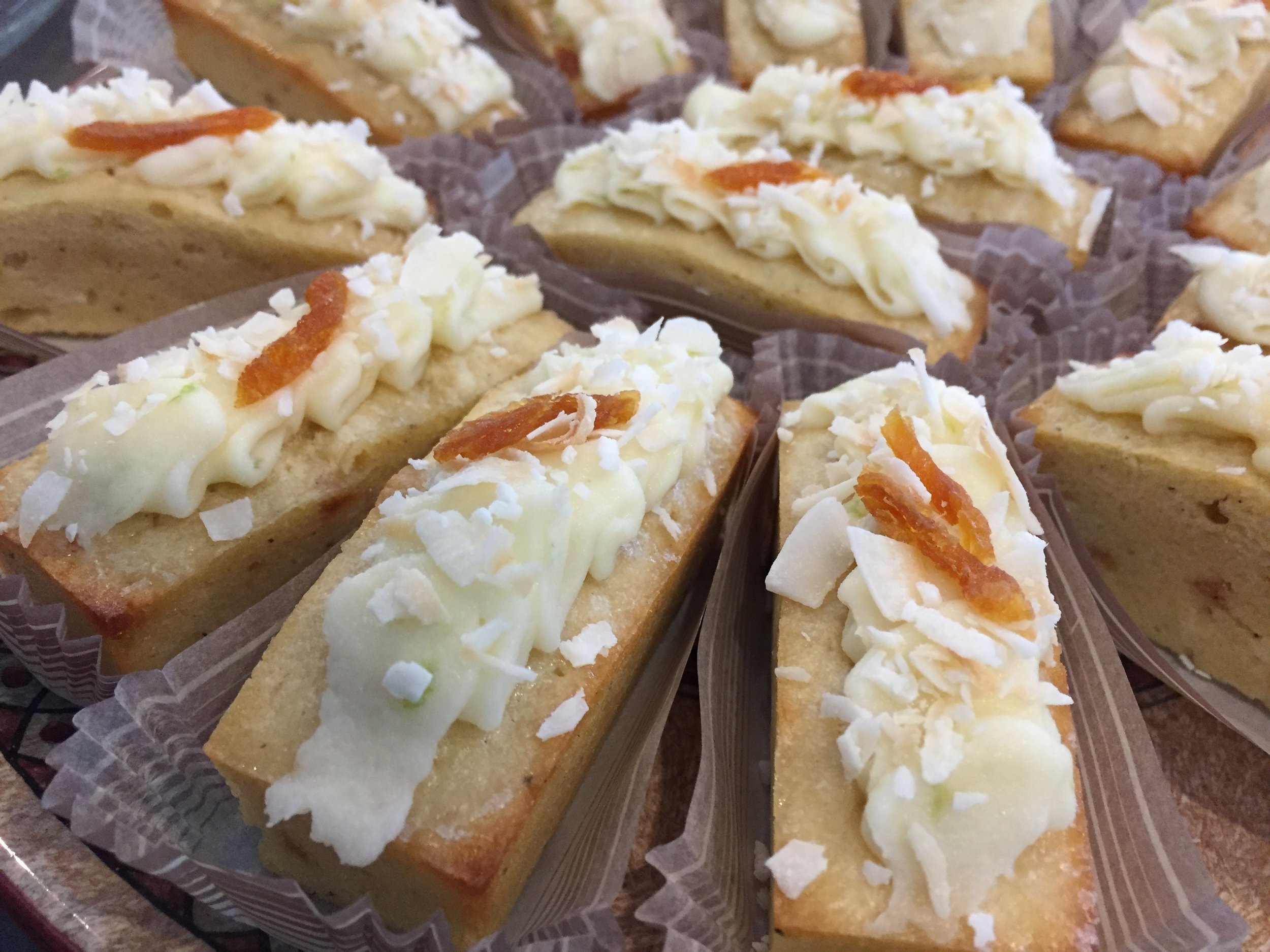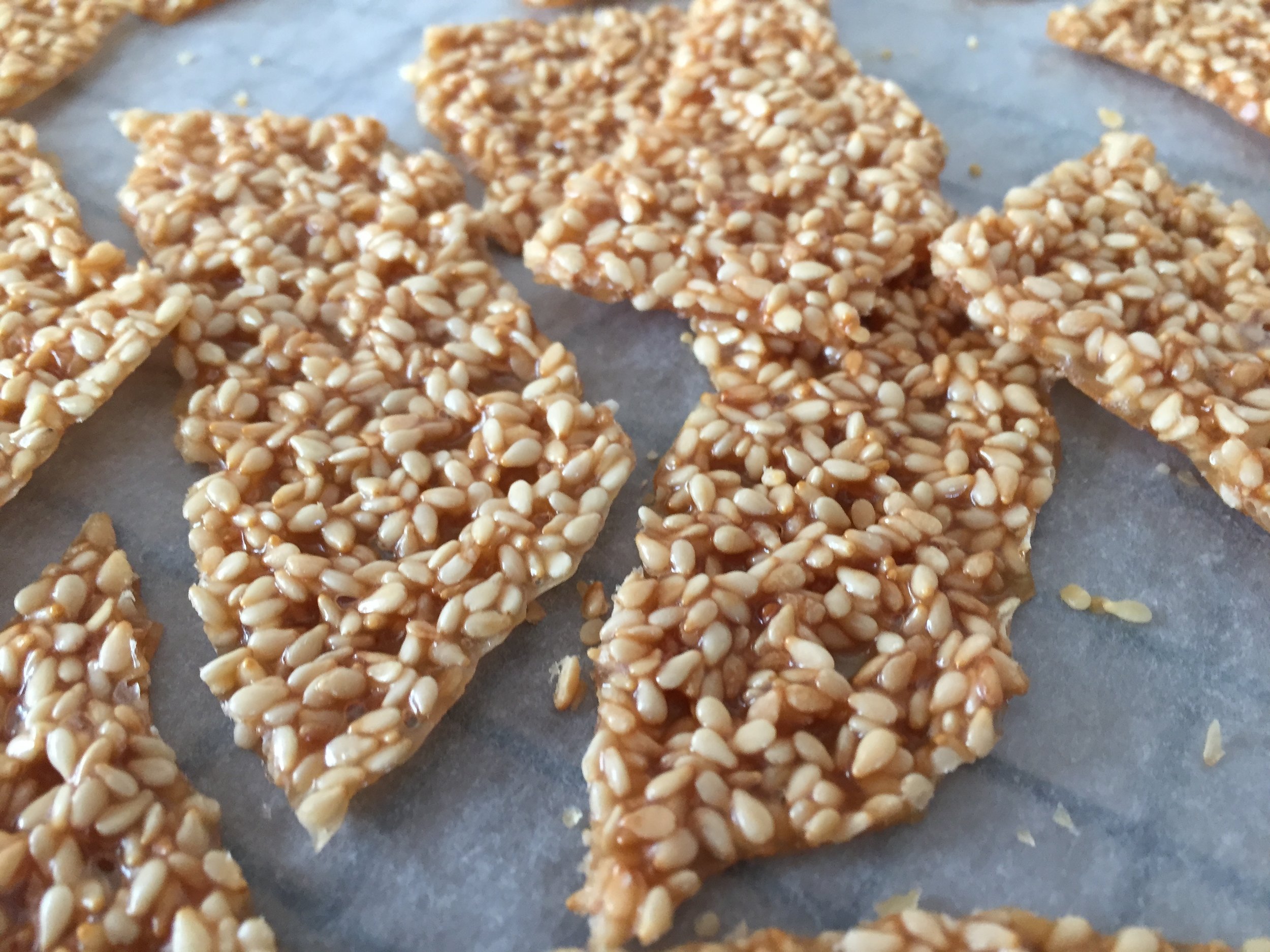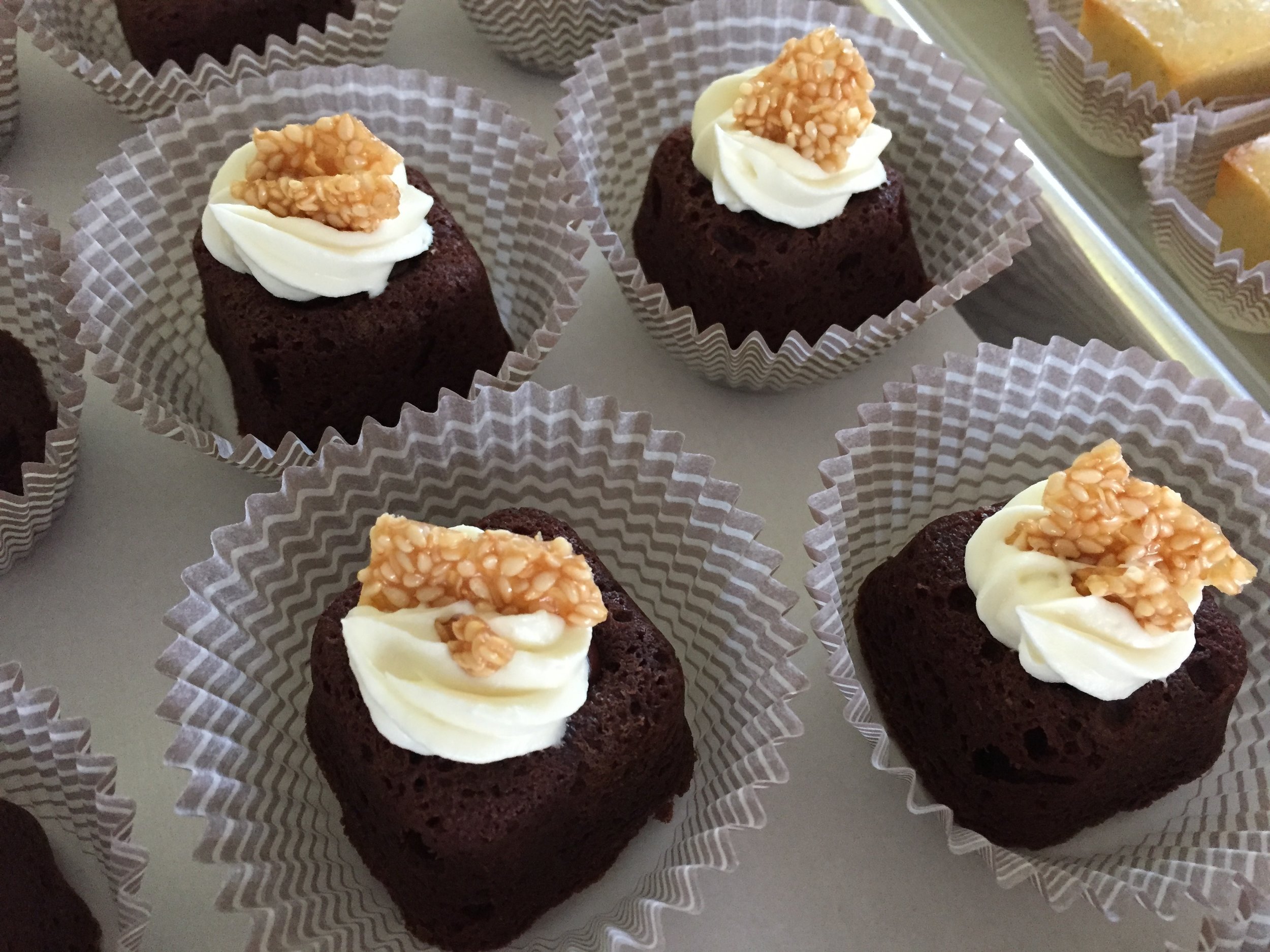Petits gâteaux part 2 - toasted coconut lime
/Welcome to part 2 of petits gâteaux!
This toasted coconut cake is based on a pound cake recipe I've had for many years, even before pastry school days. I tweaked it in a few places to create a delightful, dense and flavorful cake made with ricotta, lime zest, diced dried pineapple, toasted coconut, a bit of whole wheat pastry flour plus the usual butter, eggs, sugar etc.
I baked these babies in another of my favorite flexi-molds from Silikomart - a rectangular ingot shape that just speaks to me.
Ready for the oven
All baked up and glazed
Just out of the oven I brushed on a lime glaze then popped them back in for a few minutes to set the glaze.
Once cooled, I garnished the cakes with a basic cream cheese frosting, zinged with some lime zest, plus a sprinkle of toasted coconut and a julienned piece of dried pineapple.
Time for the recipes!
TOASTED COCONUT LIME CAKE: makes one standard Bundt cake OR two medium loaf pans or multiple small cakes. I made a half recipe which yielded 19 "ingots". Components include cake, glaze and frosting plus garnishes.
- Get a few things ready: toast 70 g (plus a bit more for garnish) unsweetened shredded coconut and set aside. Zest three limes, reserving the zest of two for the cake and one for the frosting, then juice the limes to yield 45 ml juice (you can do a combo of pineapple and lime juices if you'd like) for the cake plus 30 ml juice for a glaze at the end. Finely chop about 1/4 cup dried sweet pineapple (I found mine at Trader Joe's) and cut a bit more in strips to use as top garnish.
- Heat the oven to 325 ºF. If using a Bundt pan or loaf pans, do the butter and flour thing. No need for that with silicone molds.
- In a medium bowl whisk together 272 g all purpose flour, 88 g whole wheat pastry flour and 1/4 teaspoon salt.
- In the bowl of a stand mixer fitted with the paddle attachment, cream 227 g unsalted butter with 170 g whole milk ricotta until smooth; add in 480 g granulated sugar and the two lime zests, then cream until light and fluffy. NOTE: I like to rub the lime zest into the sugar as I do my mise en place then just add the zested sugar when ready.
- Add 5 large eggs, one at a time, beating well and scraping the bowl after each addition.
- Blend in 1 teaspoon vanilla extract.
- Add lime juice alternating with the dry ingredients just until blended.
- Blend in the toasted coconut and diced dried pineapple.
- Fill prepared pan(s) or molds and bake. Bundt will take up to 1.25 hours, loaves more like 50-60 minutes and small cakes perhaps 20-25 minutes. Watch what's going on in there! A skewer inserted in the center should come out clean. Remove from the oven.
- While your cakes are baking, make a GLAZE by whisking together 3/4 cup powdered sugar and 2 tablespoons lime (or pineapple) juice. You want it thin for just that oh-so right light coating. Once the cakes are out of the oven, brush the glaze on the surface and pop them back in for a few minutes to set the glaze.
- Let cool in the pan or molds, then remove.
LIME CREAM CHEESE FROSTING: makes about 2 cups, plenty for your needs (I made a half recipe for my half cake recipe).
- Soften 227 g cream cheese and 113 g unsalted butter on low in the microwave. I you prefer not to use a microwave, place the cream cheese and butter in a bowl and place that in a second larger bowl with warm water - you want them soft, not melted.
- Add 170 g powdered sugar, 1/2 teaspoon vanilla, a splash of lime juice and the zest of 1 lime.
- Blend all until smooth. Spread or pipe as you desire on the top(s) of the cake(s).
For the pièce de résistance, sprinkle some toasted coconut on top along with a piece of slivered dried pineapple. Et voilà. You've done it!!





















